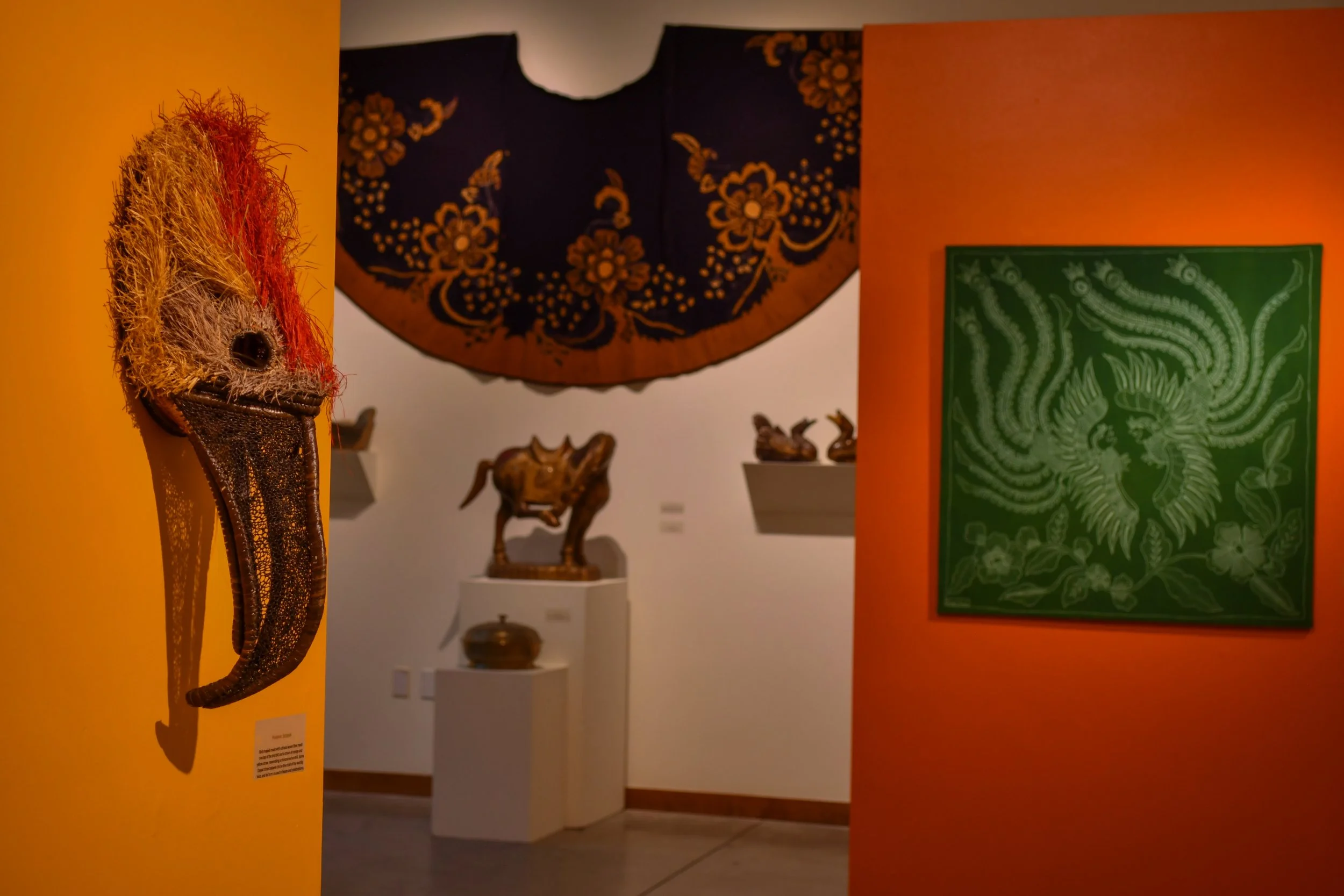Southeast Asian Art and the Legacy of Harriet Isom
Photos by Brynne Norton
Article Madeline Teeter
NEWBERG, Ore. – A new art exhibition opened on Nov. 3 at George Fox University (GFU). The gallery features a variety of items from Southeast Asia (Malaysia, Indonesia and Laos) including paintings, textiles and metalwork. The collection is courtesy of Harriet Isom, who collected these pieces during her time as a foreign service officer (FSO).
Isom’s career as a FSO began in 1961 and she served until 1996, for 35 years. “In 1961, I was an unusual FSO recruit both as a woman and coming from a rural background,” Isom said. “I also chose to serve in what was then called the Third World of developing countries in Asia and Africa rather than opt for Europe, as so many of my fellow recruits did.”
“My first posting was Kuala Lumpur, Malaya (later, Malaysia), a country of a multi-ethnic makeup of Malays, Chinese and South Asians, each with differing cultural and artistic heritages,” Isom said.
Initially, she did not collect many art pieces, as she was unsure if her salary could cover it. “But I did make one good purchase at an art show: a painting by Teng from the Island of Penang, who is still credited with being the first Asian artist to use the intricate wax and dye method of batik making to create paintings. That colorful piece is in the exhibit,” she said.
The country that Isom served in the longest was Indonesia. Many of the pieces in the collection are from this region.
“There was much to collect such as bronzes, paintings, puppets, the Balinese wood sculptures, textiles and craft of all kinds,” Isom said. “A favorite is the gong that I commissioned in Bogor, West Java.” That gong can be seen in the exhibition, alongside the puppets Isom mentioned.
Isom shared that her time in Laos from 1986-89 as a Permanent Charge d'Affaires was difficult. “Living for us Americans was very restricted. We could not leave Vientiane without Foreign Ministry permission, which was seldom granted in my early years there, and negotiations with a hostile government were difficult indeed,” she said.
This did not stop her from collecting artwork. “There were unusual items to collect in Laos but you had to search diligently in the open market and in their meager shops,” Isom said. “Of note in the exhibit is the silver ‘baci’ bowl (pronounced ‘bossy’), used endlessly in Lao society in a delightful string-tying ceremony for…welcomes, departures, weddings and other special events.”
While she spent many years abroad during her time as a FSO, her roots had always been in Oregon. “I retired…and returned to my family ranch in northeastern Oregon near Pendleton,” Isom said. “The house that I inherited was built in 1945 by my grandparents.”
“It was pure serendipity that brought my art collection to George Fox University!” said Isom. She explained that one of her friends knew a member on the school board and mentioned Isom’s collections to him, which caught the university’s interest. The connection started back in 2017 and an agreement was signed in 2023.
“Their vision is to use it as a teaching tool,” said Isom. “In addition to rotating displays, the students of Art and Design, History, Humanities and Global Cultures will be able to access and study the collection and supporting documents from my foreign service career for research projects and enrichment activities.”
Isom has already held two exhibits from her collections at GFU, which displayed Asian/African tribal art and Central African art. When speaking of her overall collection, she said, “It is a diary of my life and I'm still collecting!”
The gallery will be open for all to see until Dec. 5, and is located in Minthorne Art Gallery in the Hoover Academic Building. Harriet Isom will be visiting campus on Nov. 17 to give an Art Talk, for those hoping to learn more about her and the collection.

